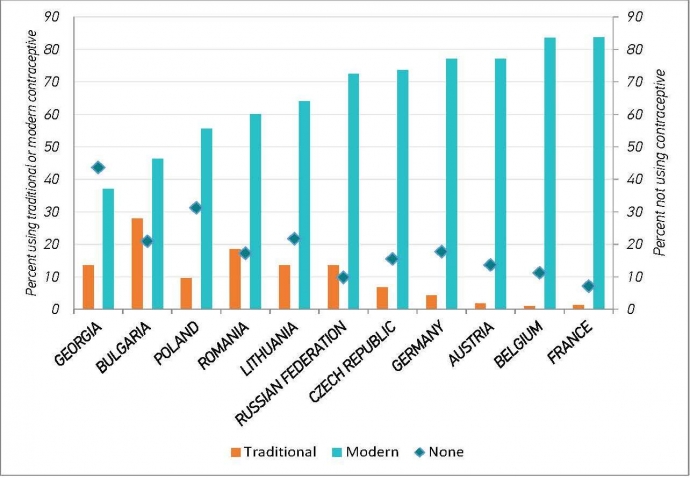The GGP contain rich data on contraceptive use and reveal stark differences between Eastern and Western European countries. Among partnered individuals age 18-45, the use of traditional contraceptives is higher in Eastern Europe while being close to zero in Western Europe. In contrast, the use of modern contraceptives is much more prevalent in Western Europe. Differences are also observed in the percentage of non-users (here restricted to those not intending to have a child). These differences in contraceptive behavior can be linked to Western Europeans being more ready (i.e. no fertility intentions, high perceived costs of childbearing), willing (i.e. modern family values, not religious), and able (i.e. higher educated, employed, urban residence) to use modern contraceptives as compared to Eastern Europeans. In addition to these individual differentials, prevailing social and cultural expectations concerning fertility, religiosity, and gender equality all help explain differences across countries.
Use of contraception method, by country

Note: Data: Generations and Gender Survey, Wave 1. The subsample includes 17,492 men and 20,712 women in a heterosexual relationship in which the respondent and his/her partner were between 18 and 45 years. In this analysis, the use of traditional contraception includes withdrawal, the rhythm method, etc. while modern contraception include male condom, the pill, implant, etc. The figures for the non-use refer to the subsample not intending to have a child.Source: Rozemarijn Dereuddre, R., Van de Putte, B. and Bracke, P. (2016). Ready, Willing, and Able: Contraceptive Use Patterns Across Europe. European Journal of Population 32:543–573, DOI 10.1007/ s10680-016-9378-0.
Fill the form below with your contact information to receive our monthly GGP at a glance newsletter.
